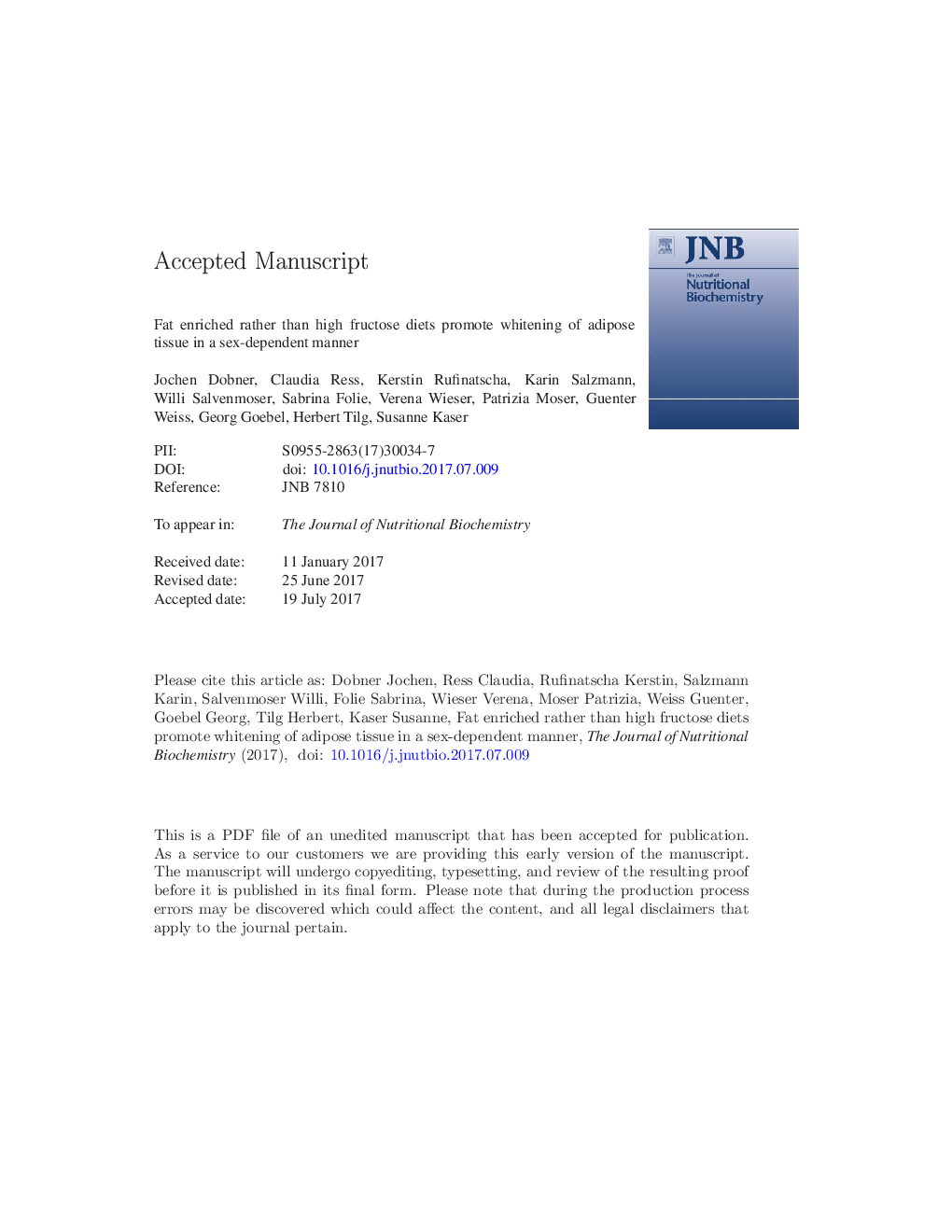| Article ID | Journal | Published Year | Pages | File Type |
|---|---|---|---|---|
| 5512801 | The Journal of Nutritional Biochemistry | 2017 | 33 Pages |
Abstract
Adipose tissue is a critical regulator of energy metabolism and an effector organ of excessive caloric intake. We studied the effects of high-fructose (HFruD), high-fat (HFD) and mixed high-sucrose and high-fat diet (HFHSD) on adipocyte morphology and biology and consecutive metabolic effects in male and female C57BL/6 mice. Forty male and 40 female mice were randomly assigned to one of four dietary groups and fed for 10 weeks ad libitum. After 10 weeks of feeding, mice were analyzed in regard to glucose metabolism, insulin sensitivity and alteration in adipocyte morphology and function. Weight gain and diminished insulin sensitivity in HFD- and HFHSD-fed mice were accompanied by increased adipocyte size and a shift in size distribution towards larger adipocytes in all mice. The latter effect was also found but less pronounced in HFruD-fed mice, while insulin sensitivity and body weight remained unaffected. In male mice, expansion of white adipocytes along with decreased uncoupling protein 1 (UCP-1) expression and alterations of mitochondrial biogenesis was found after HFD and HFHSD feeding, while in female mice, UCP-1 expression was also reduced in the HFruD dietary group. Diet-induced cellular alterations were less pronounced in female mice. Our data demonstrate that high-fat rather than high fructose consumption drives metabolically disadvantageous alterations of adipocyte differentiation involving whitening and insulin resistance in a sex-dependent manner with most deleterious effects seen upon administration of combined sucrose and fat-enriched diet in male mice.
Related Topics
Life Sciences
Biochemistry, Genetics and Molecular Biology
Biochemistry
Authors
Jochen Dobner, Claudia Ress, Kerstin Rufinatscha, Karin Salzmann, Willi Salvenmoser, Sabrina Folie, Verena Wieser, Patrizia Moser, Guenter Weiss, Georg Goebel, Herbert Tilg, Susanne Kaser,
